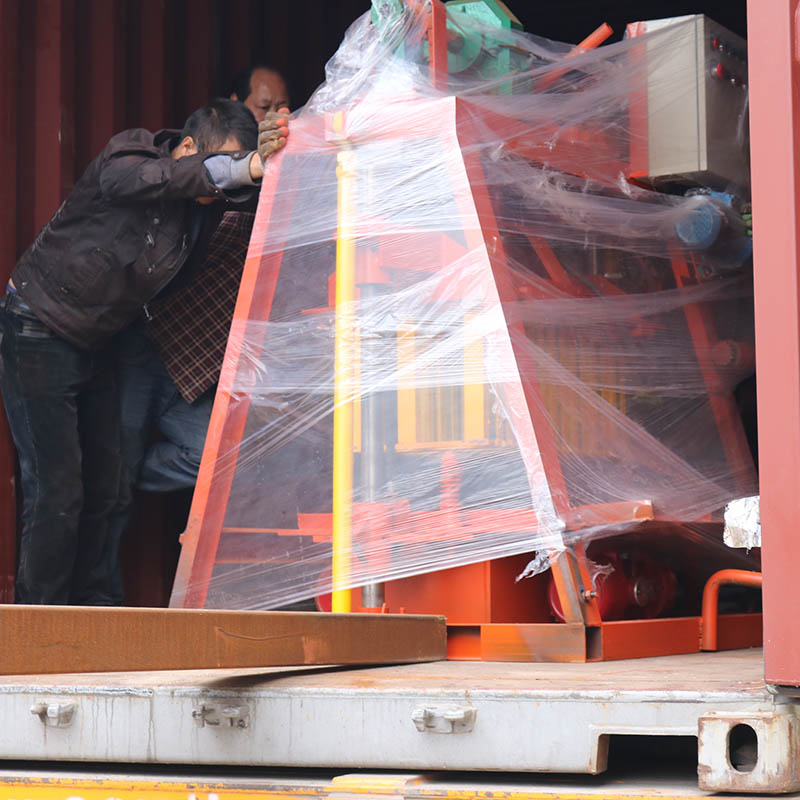
Image source:Aiwei block machine
Introduction
As the world grapples with the urgent need to address environmental challenges, the construction industry is embracing sustainable practices to reduce its carbon footprint and conserve valuable resources. Concrete block making machines, once emblematic of traditional construction, are now leading the charge towards eco-friendly building solutions. In this article, we delve into how these machines are revolutionizing the construction landscape by producing environmentally conscious concrete blocks, optimizing resource utilization, and contributing to a greener and more sustainable future.
1. The Sustainability Imperative
Sustainability has emerged as a guiding principle across industries, and the construction sector is no exception. The embodied energy, resource consumption, and waste generation associated with construction have necessitated a shift towards more responsible practices.
- Carbon Emissions: The construction industry is a significant contributor to carbon emissions due to energy-intensive processes and transportation.
- Resource Depletion: The extraction of raw materials for construction, such as sand and aggregates, contributes to resource depletion and habitat destruction.
- Waste Generation: Construction waste poses a major challenge, with landfills often burdened by discarded materials.
2. Concrete Blocks: A Catalyst for Sustainable Construction
Concrete blocks, essential building components, are undergoing a sustainable transformation with the aid of modern block making machines.
- Recycled Materials: Innovations in concrete block making technology enable the incorporation of recycled aggregates, reducing the demand for virgin materials.
- Energy-Efficient Production: Advanced machines optimize energy consumption during block production, reducing carbon emissions.
- Design Flexibility: Customizable block designs allow for efficient use of materials, minimizing waste and promoting sustainable designs.
3. Resource Optimization: A Path to Greener Building Materials
Concrete block making machines are pioneering the use of alternative materials and resource-efficient processes, transforming the production of concrete blocks into an eco-friendly endeavor.
- Recycled Aggregates: Some machines allow for the use of recycled aggregates from construction and demolition waste, curbing the need for new materials.
- Fly Ash Incorporation: By integrating fly ash, a byproduct of coal combustion, into block production, machines reduce the reliance on cement and contribute to waste reduction.
4. High-Performance Insulation Blocks: Enhancing Energy Efficiency
Concrete block making machines are embracing sustainable insulation solutions, enabling the creation of blocks with enhanced thermal properties.
- Improved Insulation: Insulation blocks produced by these machines offer better thermal performance, reducing energy consumption for heating and cooling.
- Energy Savings: Buildings constructed with high-performance insulation blocks require less energy for temperature control, resulting in reduced carbon emissions.
5. Minimal Waste, Maximum Efficiency
Sustainable construction prioritizes waste reduction, and concrete block making machines play a pivotal role in achieving this objective.
- Precision Molding: Modern machines ensure uniform dimensions and precision molding, minimizing material wastage during production.
- Recycling Potential: Discarded or damaged blocks can often be recycled back into the production process, reducing waste sent to landfills.
6. LEED and Green Building Certifications
Concrete block making machines contribute to achieving green building certifications such as LEED (Leadership in Energy and Environmental Design), recognizing the environmental responsibility of construction projects.
- Energy and Atmosphere: The energy-efficient production process aligns with criteria for reducing energy consumption.
- Materials and Resources: The use of recycled aggregates and alternative materials supports sustainable material choices.
7. Reduced Environmental Impact: A Win for Communities and the Planet
The adoption of sustainable practices in concrete block production using modern machines has a positive impact on both local communities and the broader environment.
- Community Health: Reduced emissions and resource consumption lead to improved air quality and lowered environmental impact on surrounding communities.
- Biodiversity Conservation: By minimizing habitat destruction through responsible resource usage, sustainable construction preserves local ecosystems.
8. Industry Collaboration and Regulation
The shift towards sustainable construction with concrete block making machines requires collaboration among stakeholders and supportive regulations.
- Manufacturer Collaboration: Collaboration between machine manufacturers, builders, and architects ensures that sustainable practices are integrated seamlessly.
- Government Regulations: Governments can incentivize the adoption of sustainable technologies by offering tax incentives and green building certifications.
9. Overcoming Challenges
While sustainable construction practices offer numerous benefits, challenges must be addressed to ensure widespread adoption.
- Cost Considerations: Initial investments in sustainable technology can be higher, but the long-term benefits often outweigh the costs.
- Awareness and Education: Raising awareness about the benefits of sustainable construction and providing training on eco-friendly practices is essential.
Conclusion: Building a Greener Tomorrow
Concrete block making machines are catalyzing a transformative shift towards sustainable construction, aligning with the global commitment to combat climate change and conserve resources. By embracing recycled materials, optimizing energy consumption, and producing high-performance insulation blocks, these machines are rewriting the narrative of traditional construction. As the world gravitates towards a greener future, concrete block making machines are emblematic of the industry’s determination to leave a positive legacy, one block at a time. Through these innovations, we are constructing more than just buildings; we are building a sustainable and resilient future for generations to come.
